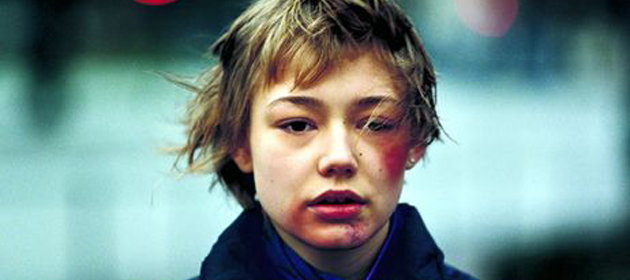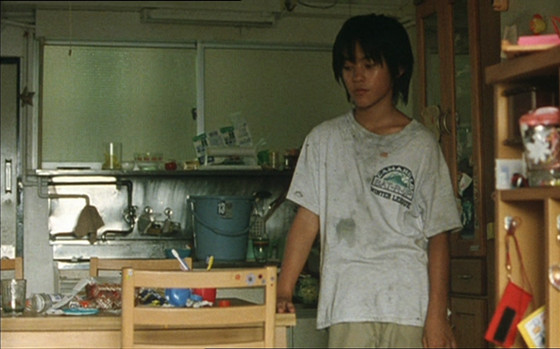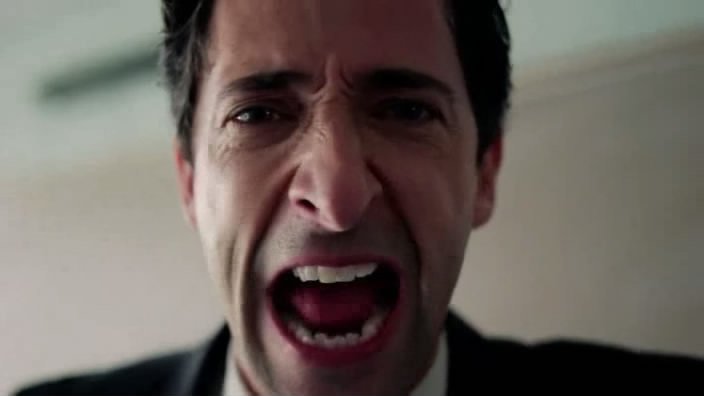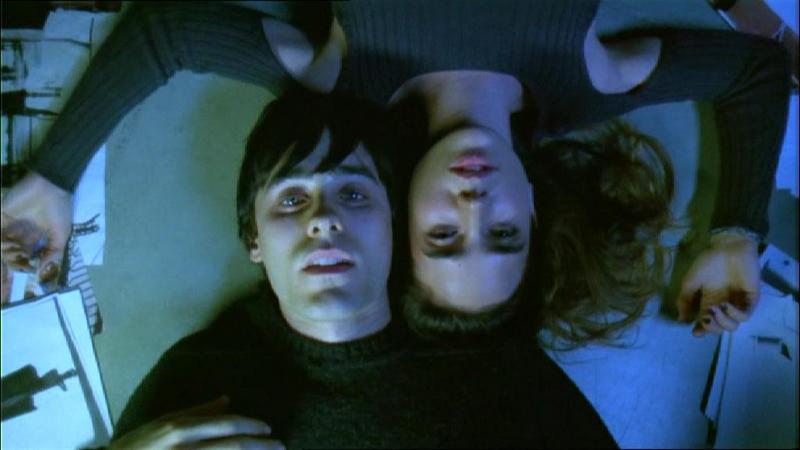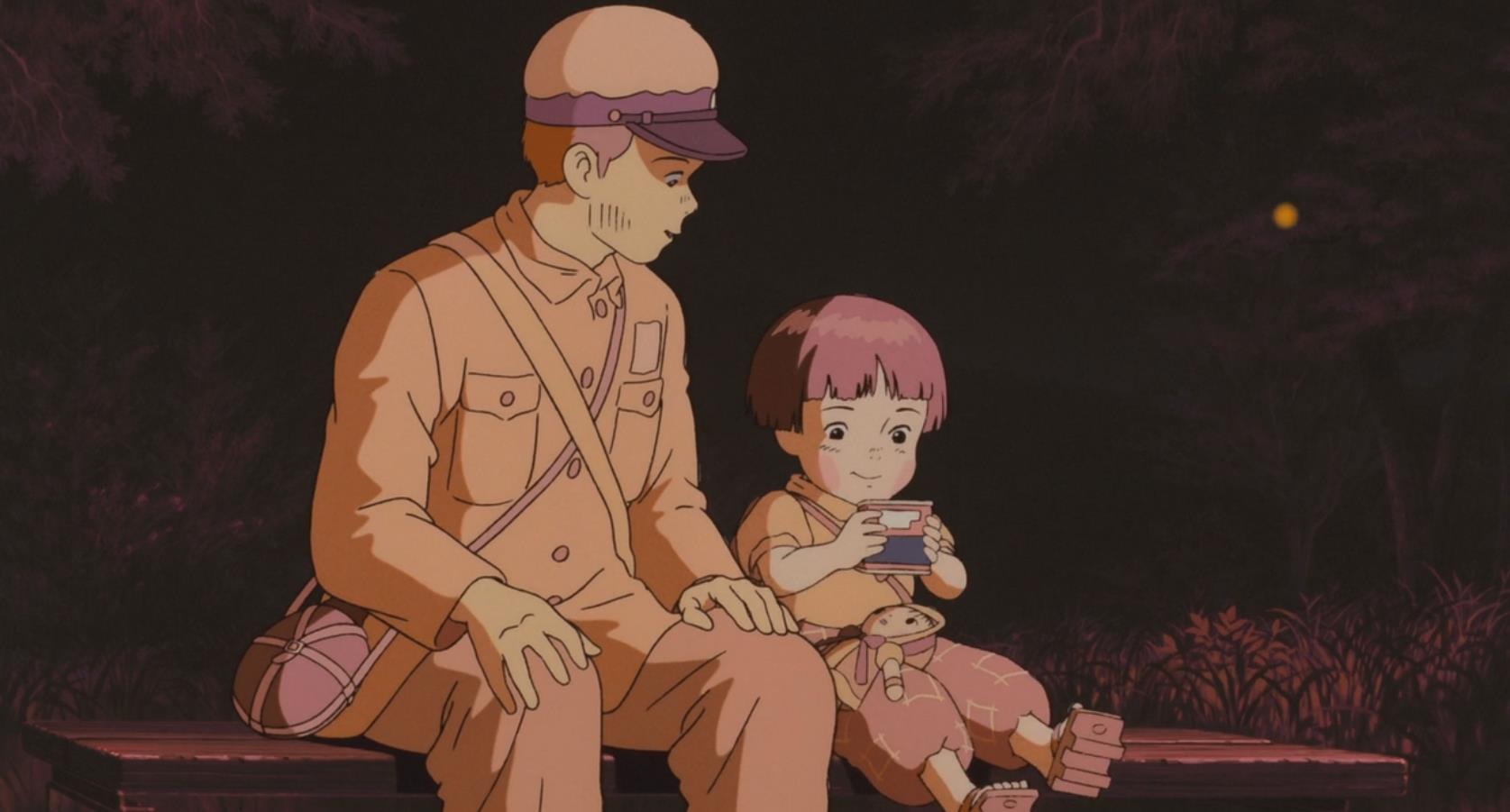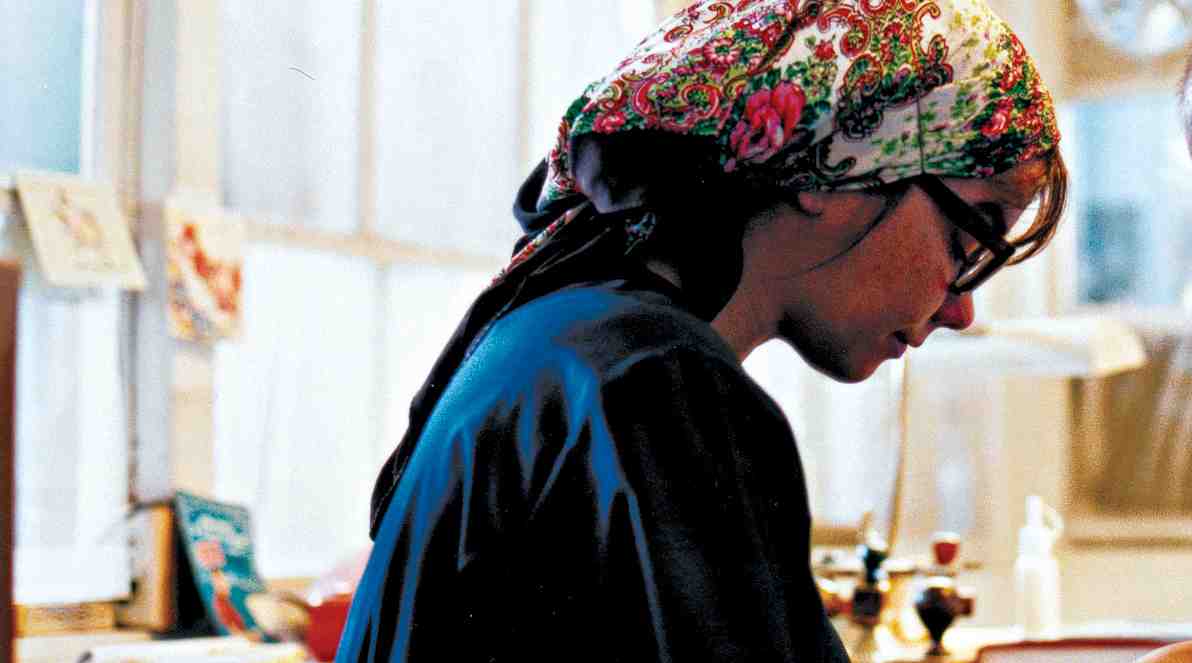7. Lilya 4-Ever (2002)
Lilya lives in the former Soviet Union with her mother and her mother’s boyfriend in a poor and degraded residential area. Lilya’s mother decides to move to the United States with her boyfriend, leaving Lilya behind. After being abandoned, Lilya gets kicked out of her apartment by her cruel aunt, who takes the space for herself. She is relocated to a much smaller and dirty apartment.
The tragedies do not end here. After her best friend spreads the lie that Lilya was prostituting herself, in order for the friend to save herself from scandal, Lilya gets treated with contempt and disgust by everyone except her only friend, Volodya. He is a thirteen-year-old boy with suicidal tendencies due to an abusive family. When her money runs out and with no one to help her, Lilya is forced into prostitution in order to sustain herself and Volodya. His friendship and the moments of tenderness they share are the only things which gives Lilya the strength to keep going.
At a certain point the viewer starts to hope that something good is going to happen. A charming and kind man helps Lilya on the street and his interest for her seems genuine. After a short time he invites her to move to Sweden with him and promises her a big apartment and a good job. Lilya sees hope for a better life. Leaving Volodya she goes with the man, repeating her mother’s betrayal of her. Soon after she arrives, Lilya meets an atrocious fate being subjected to a life of sexual slavery.
This is an important and realistic portray of several prominent disturbing realities. A story details the lives of two teenagers who have never known happiness and who do not believe that life has something good to offer.
6. Nobody Knows (2004)
Nobody Knows is one of the best works of Japanese director Hirokazu Koreeda. The heartbreaking story, based on events which took place in Tokyo, opens with a mother moving into an apartment with her kid, Akira, a twelve-year-boy. She also has three more children hidden from the landlord.
They are all from different fathers. Their mother behaves strangely as she’s always too happy, acts like a kid and leaves them alone all day inside the apartment. They don’t go to school and they can’t leave the apartment because they cannot be seen by the other tenants. Despite this peculiar situation, the four siblings seems to be happy, as they deeply love their mother and are just satisfied by the fact they are all living together.
Since Akira is the oldest and the only one who can leave the apartment, he’s in charge of taking care of house and the children. One day, the mother goes out to work and never returns, leaving only a note and an envelope with some money. Initially things are fairly well but when the money runs out and the electricity and water are cut off, the siblings start struggling.
Koreeda magnificently expresses the slow downfall of this family. Solitude starts to overtake them with long days spent inside the apartment. The little details make this film a masterpiece, along with the stunning performances of the young actors. Children’s suffering is always a sensitive subject and it becomes more pronounced when the viewer achieves a great empathy with the characters.
5. Detachment (2011)
The pairing of Tony Kaye and Adrian Brody results in this intense and brilliant work. Kaye had reached a directorial peak with American History X and Brody had delivered an Oscar winning performance in The Pianist. This film proves that both of them still have a lot to offer the audience.
The movie centers on Henry Barthes, a substitute teacher with a natural talent in relating to his students, who was appointed to a troublesome high school that depicts a harsh educational reality: an educational system not directed for students, bullying and family carelessness. At the same time he meets a young prostitute and gives her shelter, comfort and safety. Harry has a dark past that haunted him and made him a highly depressed, unbelieving and unhappy person. Although he is a very kind person with an immense humanity, Harry lives his life without any hope in the future, in people or in the possibility of real happiness.
Despite the scenario, the theme of the film does not focus on school problems or the failure of the educational system. It has a hidden meaning much broader and deeper. It is an extremely pessimistic view of life and people. The way we live. The attitude of people in relation to each other. The impotence of the human being before its own nature, selfish and individualistic. As Harry narrates his thoughts throughout the film, the viewer starts feeling infected with the negativity of his prospects and is completely worn out emotionally when the film ends.
4. Requiem for a Dream (2000)
This masterpiece by Darren Aronofsky is a magnificent and devastating cinematic experience. It is so well done that it almost seems like a documentary about the world of drugs and its effects on those who dare to penetrate it. Aronofsky takes the viewer through the motivations and weaknesses of the four main characters that are taken to the limit. The viewer is able to understand how they feel, their desires, their fears… while watching helplessly their descent into hell.
Harry (Jared Leo), Marion and Tyrone are three youngsters, full of dreams and plans for live, passionate and with thirst for living their youth. At first they see drugs only as an experience of pleasure (although they’re already addicted to it), but when things start to become difficult, they start to face it as the only possibility of income, as the only means to an end, to happiness. At the same time, the physic and psychological addiction increases drastically.
Sara (Ellen Burstyn) is Harry’s mother, a widow that lives alone in this dull and apathetic life, immersed in a boredom of a routine. She doesn’t have any life goals, any projects and her only consolation are her son’s visits, a few minutes of chat with her neighbors and a tv program she watches daily. When one day receiving a letter (misleading advertising) which leads her to believe that she was selected to participate in that program, Sara regains the will to live, initiating a quest to lose weight and fit into the dress of her dreams. Using the aid of , she gradually begins to suffer the harmful consequences of drug addiction.
The issue of degradation by drug is perfectly approached through the fall of the characters. And the exploration of the solitude (particularly among old people) is also expressed in the film in a sublime and touching way. One of the factors that contributed most to the success of this film was, and rightly so, the assembly and editing of scenes.
It is certainly a unique work. The other factor was undoubtedly the soundtrack, which depicts perfectly the tension and the anxiety that grow throughout the film until the final climax. The film projects an effect that sticks to the viewer long after the film has ended. Regardless one has liked it or not, it is certain that no one was indifferent to it.
3. Grave of the Fireflies (1988)
This classic of Japanese animation, which is based on real events, takes place in Japan during World War II, and it depicts the impact of military conflicts among the civilian population, focusing on the story of two brothers, Seita (a young teenager) and Setsuko (around four-year-old). After being orphaned and homeless due to a bomb attack, they move to their aunt’s house, who treats them in a cold and little caring way.
Not bearing to see his little sister gloomy and unhappy, Seita decides to leave his aunt’s house. Together with Setsuko, they move to a small cave on the bank of a river. Even without any conditions and facilities, the two brothers are happy to be able to live together and free. But live (or survive) during this dark period quickly appears to be more difficult than it seemed, especially for two kids that only possess a strong will and an immense love and affection for each other.
Far from being the typical animated film, with a happy and lively vibe, Grave of the Fireflies is not intended for a younger audience because of its extremely heavy atmosphere, suffering and tragic ending. It raises the same issue like Nobody Knows, children who decide to fight against major adversities and go through the cruelest privations in order to stay together. Stories about love and survival that voice an immense amount of tenderness and affection, which contrast with dreary scenarios of sorrow and desolation.
2. Dancer in the Dark (2000)
One of the most acclaimed works of Lars Von Trier, this Oscar nomination drama/musical counts with the participation of Bjork, Catherine Deneuve, David Morse and Peter Stormare, and opens its curtains for 140 minutes of pain, aiming straight to the heart.
Bjork plays Selma, a girl of Lesta Europe with a huge passion for musicals, who emigrated to a small-town in America in the 60s with her son of 12 years old, working as a machine operator in a factory. They live in a house trailer behind the home of Bill and his wife. Selma is a naive and pure hearted girl, almost blind due to a genetic disease. Because her son suffers from the same evil, she works very hard in order to get enough money to pay for an operation to prevent her son from going blind too.
One day, her neighbor and friend Bill confides her that he has no money left and is about to lose the house, but he doesn’t have the courage to tell his wife, fearing she may leave him. Sympathizing with his fragile state, Selma tells him that the money she always says she sends every month to her homeland, where her father lives, is in fact stored in the trailer and will serve to pay for her son’s operation.
Despite being an innocent and kind person, she refuses to lend the money to Bill when he asks her (desperately trying to cover-up his farce) because the most important thing in the world for her is to save that money for her son’s operation. Later, Bill finds where the money is kept and steal it, taking advantage of Selma’s blindness. She immediately knows it was Bill who took her savings and goes to his house to recover the money. She does not expose his secret even after knowing he told his wife that she tried to seduce him and is trying to steal them.
Things get out of control and Bill, troubled and desperate, forces Selma to kill him. With all the evidence pointing against her, Selma is condemned to death penalty. And until the very end she refuses to tell that the money was for her son’s operation (because she managed to deliver it to the doctor before the arrest and was afraid they could cancel the operation).
The narrative is interspersed with beautiful fantasy scenes of music and dance that correspond to Selma’s imagination and that always arise in the course of complex situations or conversations. As she refers in the film, she is often daydreaming and when things get tough she usually seeks relief in her fertile imagination to stage and perform in musical scenes.
Courageous and selfless, admired by all who know her, Selma has the ability to raise the very best in each person. Because of that, it is devastating to watch the ungrateful end that Lars held for this wonderful character. It is virtually impossible the viewer does not feel moved by the sweetness and goodness of this simple and humble girl but with strong principles, while feeling overwhelmed before the level of evilness of a human being. Two polar opposites that contrast fiercely throughout the film, leaving the viewer completely astonished.
1. The Road (2009)
An audacious work based on Cormac McCarth’s Pulitzer Prize winning novel that shows the journey of a father and his young son through a post-apocalyptic world to a salvation that could not even be there. The plot is actually very simple, it’s the little details that protrude.
Viggo Mortense plays the father whose name the viewer never gets to know, he is determined to take his son to the coast in the South, their last hope for salvation in that decrepit scenario. The film consists of gray and barren landscapes, with few traces of human life, animal or plant. The father has flashbacks about his past life before the apocalyptic phenomenon.
The sunny images and the atmosphere of happiness and romance in which he lived with his wife (Charlize Theron) contrasts dramatically with the bleak and dying landscape where he walks now. Through his memories, it is known that the couple’s son was born shortly after the phenomenon that ravaged the world and that his wife gave up her life, unable to endure her family when suffering in the middle of that chaos and dehumanization.
The emotional impact of the movie is extremely intense. What people fear most is death. Fear affects their reasoning, sucks their humanity. The father knows to what extent people can get to survive and therefore carries a pistol with two bullets, ready to kill the child if they become trapped. Because this is a scenario of living death, where people kill, eat and torture each other, their best chance, given the circumstances, is to die quickly and painlessly.
The most frightening and powerful factor in the film is its credibility. Everything about this post-apocalyptic scenario is quite possible to conceive. What leads people to ask themselves how they would react in the midst of devastation, in a world which is confined to die slowly. The very end of the film is extremely ungrateful because it leaves open a number of questions: are those people that the boy found truly kind and genuine? Will they be able to reach the destination? And even they get there, will there be some glimmer of life in the end of the road?
Author Bio: Inês Bom is a law student who always had a passion for cinema. What started as a simple enthusiastic analysis soon developed into a need to venture into something that would allow a more thorough search and knowledge of cinema. She has very ecletic taste and is always trying to find out more about this art.
